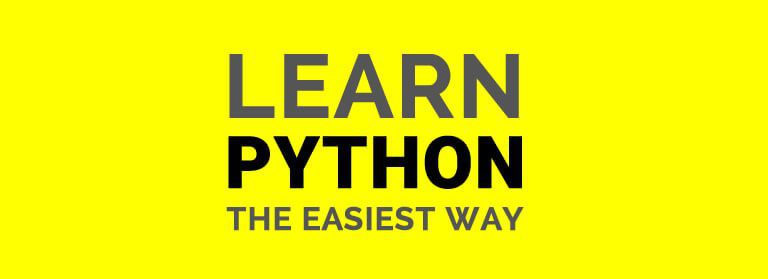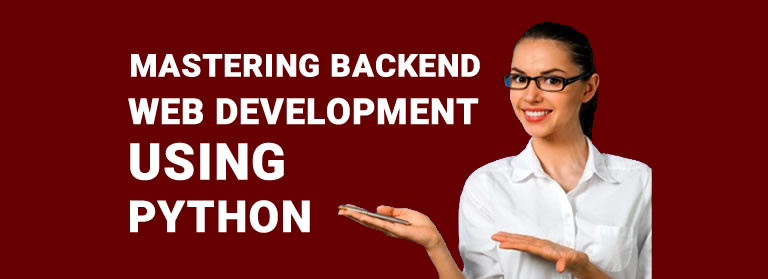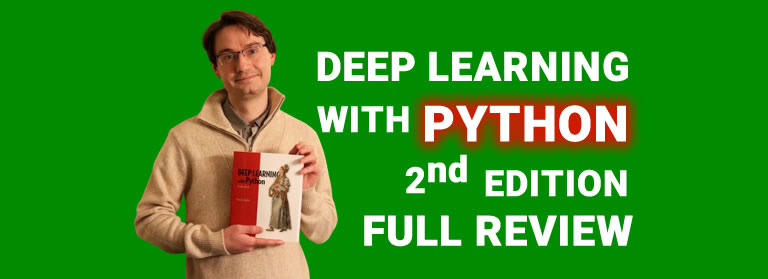Python Programming: No.1 Comprehensive Python Course


What is Python Programming?
Python programming is a high-level, versatile, and dynamically typed programming language renowned for its readability and ease of use. Guido van Rossum initiated its development in the late 1980s, and it has since evolved into one of the most popular and widely adopted languages globally.
Known for its clear and concise syntax, Python prioritizes code readability and simplicity, making it an ideal language for beginners while maintaining robust capabilities for experienced developers. Its design philosophy emphasizes code readability, encouraging developers to express concepts in fewer lines of code than languages like C++ or Java.
Python is an interpreted language, meaning that the code is executed line by line rather than being compiled into machine code beforehand. This feature contributes to its flexibility and facilitates rapid development and testing. It supports multiple programming paradigms, including procedural, object-oriented, and functional programming, providing developers with diverse tools and approaches to problem-solving.
Python has a vast standard library, offering a wide array of modules and packages that simplify complex tasks, from web development and data analysis to artificial intelligence and machine learning. Additionally, a robust community of developers contributes to an extensive ecosystem of third-party libraries and frameworks, further enhancing Python’s capabilities.
Its applications span various domains, including web development (Django, Flask), data science (NumPy, pandas), machine learning (TensorFlow, PyTorch), automation, and scripting. Its versatility and scalability have made it a preferred choice for both small-scale projects and large-scale applications.
In summary, Python programming is a powerful, versatile, and community-driven language that continues to play a pivotal role in shaping the technological landscape. Its readability, extensive libraries, and broad range of applications make it an excellent choice for developers, whether they are beginners or seasoned professionals.
What is Python Programming Masterclass ?
The “Python Programming Masterclass: A Comprehensive Course” offers a deep dive into the world of Python programming, providing an extensive and hands-on learning experience. This comprehensive course is tailored for individuals seeking to master Python programming from the ground up. Covering fundamental concepts and progressing to advanced topics, participants will gain a solid understanding of Python’s syntax, data structures, algorithms, and object-oriented programming.
The course goes beyond theoretical knowledge, emphasizing practical application through real-world projects. By immersing yourself in Python programming exercises, you’ll develop the skills necessary for success in diverse fields, including software development, data science, and artificial intelligence.
Led by seasoned instructors, this masterclass is an opportunity to elevate your Python programming proficiency. Whether you’re a beginner or an experienced developer, the course caters to all skill levels, making Python programming accessible and empowering you to tackle complex coding challenges with confidence. Enroll now in this Python Programming Masterclass to embark on a transformative journey toward becoming a proficient and versatile Python programmer.
Python Fundamentals:
Python Fundamentals serve as the foundational building blocks for understanding and proficiently using the Python programming language. In this course, participants embark on a journey through the essential elements of Python syntax, data types, and control flow structures. The curriculum typically covers the basics of variables, their assignment, and the inherent dynamism of Python’s data types, including strings, lists, tuples, and dictionaries.
A significant focus is placed on control flow statements, introducing participants to conditional structures like ‘if,’ ‘elif,’ and ‘else,’ enabling them to make decisions within their code. Loops, another crucial aspect, are explored to facilitate repetitive tasks and efficient iteration through data structures.
As this Python programming course progresses, participants delve into the concept of functions, mastering the creation and utilization of modular, reusable code. Through hands-on exercises and projects, learners gain practical experience, honing their problem-solving skills and coding proficiency.
Overall, Python Fundamentals lay the groundwork for proficiency in the language, empowering participants to write clear, concise, and effective Python code. This foundational knowledge forms the basis for more advanced topics, including object-oriented programming, web development, data science, and machine learning in subsequent stages of the learning journey.
Object-Oriented Programming (OOP) in Python:
Object-Oriented Programming (OOP) in Python is an advanced course that delves into the principles and practices of structuring code through objects and classes. This paradigm introduces participants to the fundamental concepts of OOP, emphasizing the creation and utilization of classes and objects to model and solve complex problems.
My Python programming course typically starts with a comprehensive exploration of classes and instances, elucidating how these constructs encapsulate attributes and behaviors. Inheritance, a key aspect of OOP, is covered to illustrate how classes can inherit attributes and methods from one another, fostering code reusability and modularity.
Encapsulation, another pillar of OOP, is emphasized, demonstrating how objects can encapsulate their state and behaviors, enhancing code organization and security. Participants delve into polymorphism, which allows objects to take on multiple forms, providing flexibility in code design.
Through practical examples and hands-on projects, learners gain a deep understanding of how OOP principles can be applied to Python programming. This course serves as a crucial stepping stone for those aiming to design scalable and maintainable software solutions, laying the groundwork for more sophisticated applications in web development, data science, and other specialized domains.
Web Development with Django:
“Web Development with Django” is an enriching course that immerses participants in the world of creating dynamic and robust web applications using the Django framework in Python. Django, a high-level web development framework, is renowned for its simplicity, scalability, and adherence to the Model-View-Controller (MVC) architectural pattern.
My Python programming course typically starts by introducing participants to the core components of Django, including its powerful ORM (Object-Relational Mapping) system, templating engine, and built-in administrative interface. Participants learn to define models, create views, and design templates, forming the basis for structuring data, handling user interactions, and presenting content.
As the course progresses, emphasis is placed on URL routing, authentication, and integrating third-party applications to extend functionality. Participants also explore best practices for creating RESTful APIs, facilitating data exchange between their web applications and external services.
The practical nature of the course involves hands-on projects, guiding learners in building a fully functional web application. By the end of the course, participants have the skills to develop scalable and maintainable web solutions, making them adept in Django’s capabilities for rapid and efficient web development. This course lays a solid foundation for those aspiring to enter the dynamic field of web development or enhance their proficiency in creating sophisticated web applications.
Data Analysis with Pandas and NumPy:
“Data Analysis with Pandas and NumPy” is an indispensable course that equips participants with the essential skills for efficiently manipulating and analyzing data using two powerful Python libraries, Pandas and NumPy. These libraries are instrumental in handling large datasets, performing operations on numerical arrays, and facilitating the extraction of valuable insights from diverse datasets.
My Python programming course typically commences with an exploration of NumPy, focusing on its array structures and mathematical functions that form the backbone of numerical computing in Python. Participants learn to perform array operations, data reshaping, and statistical computations, establishing a solid foundation for data manipulation.
Subsequently, the focus shifts to Pandas, a versatile library for data manipulation and analysis. Participants delve into Pandas’ data structures, Series and DataFrame, mastering techniques for cleaning, transforming, and aggregating data. Practical applications often include handling missing data, merging datasets, and applying advanced filtering and grouping operations.
By engaging in hands-on exercises and real-world scenarios, learners gain proficiency in using Pandas and NumPy for data wrangling and analysis. The skills acquired in this course are vital for individuals pursuing careers in data science, machine learning, or any field requiring systematic exploration and interpretation of datasets, making it an essential step in mastering the art of data analysis with Python.
Machine Learning with Python:
“Machine Learning with Python” is an insightful course that immerses participants in the captivating realm of machine learning, leveraging the capabilities of Python. This course serves as a comprehensive guide, introducing learners to fundamental machine learning concepts, algorithms, and the practical application of predictive modeling.
The curriculum typically starts with an exploration of key machine learning principles, including supervised and unsupervised learning, model evaluation, and feature engineering. Participants delve into popular machine learning algorithms such as linear regression, decision trees, and support vector machines, gaining an understanding of when and how to apply each algorithm.
Hands-on exercises often involve implementing machine learning models using libraries such as Scikit-learn, solidifying theoretical knowledge through practical application. This Python programming course also covers topics like model evaluation metrics, cross-validation, and hyperparameter tuning, essential for building robust and effective machine learning models.
By the conclusion of the course, participants are equipped with the skills to approach real-world problems, design machine learning solutions, and interpret model results. Whether aspiring data scientists, engineers, or analysts, learners gain valuable insights into harnessing the power of machine learning in Python, positioning themselves at the forefront of this rapidly evolving field.
Natural Language Processing (NLP) with Python:
“Natural Language Processing (NLP) with Python” is an engaging course designed to unravel the intricacies of processing and understanding human language using the power of Python. NLP is a specialized field within artificial intelligence that focuses on enabling computers to interpret, analyze, and generate human language in a way that is both meaningful and contextually aware.
My Python programming course typically commences with an introduction to the foundational concepts of NLP, exploring topics such as tokenization, part-of-speech tagging, and syntactic analysis. Participants delve into popular NLP libraries such as NLTK (Natural Language Toolkit) and spaCy, gaining hands-on experience in implementing these techniques.
Sentiment analysis, named entity recognition, and language modeling are often integral components of the course, providing learners with practical insights into real-world applications of NLP. Participants also explore the challenges associated with understanding human language, including ambiguity and context, and learn strategies to address these challenges.
Through hands-on projects and exercises, participants emerge with a solid understanding of how Python can be leveraged to process and derive insights from textual data. This Python programming course is ideal for those looking to enter the fields of data science, artificial intelligence, or any domain where interpreting and extracting meaning from textual information is paramount.
Web Scraping with Python:
“Web Scraping with Python” is a dynamic course that immerses participants into the world of automated data extraction from websites, utilizing the powerful capabilities of Python. Web scraping involves the extraction of information from web pages, making it a valuable skill for collecting data, conducting market research, and staying updated on online content.
The course typically begins with an introduction to the basics of web scraping, covering HTML and CSS fundamentals, which are crucial for understanding the structure of web pages. Participants then delve into practical implementation using Python libraries such as BeautifulSoup and Scrapy, enabling them to navigate through web pages, extract data elements, and store the information for analysis.
Advanced topics often include handling dynamic content with Selenium, managing authentication, and dealing with common challenges in web scraping, such as handling anti-scraping mechanisms.
By engaging in hands-on projects and exercises, learners gain proficiency in extracting structured data from websites efficiently and ethically. This skill set is particularly valuable for data scientists, researchers, and professionals requiring access to web-based information for analysis and decision-making. The course equips participants to harness the power of Python for web scraping, unlocking a world of possibilities for data acquisition and analysis.






Responses